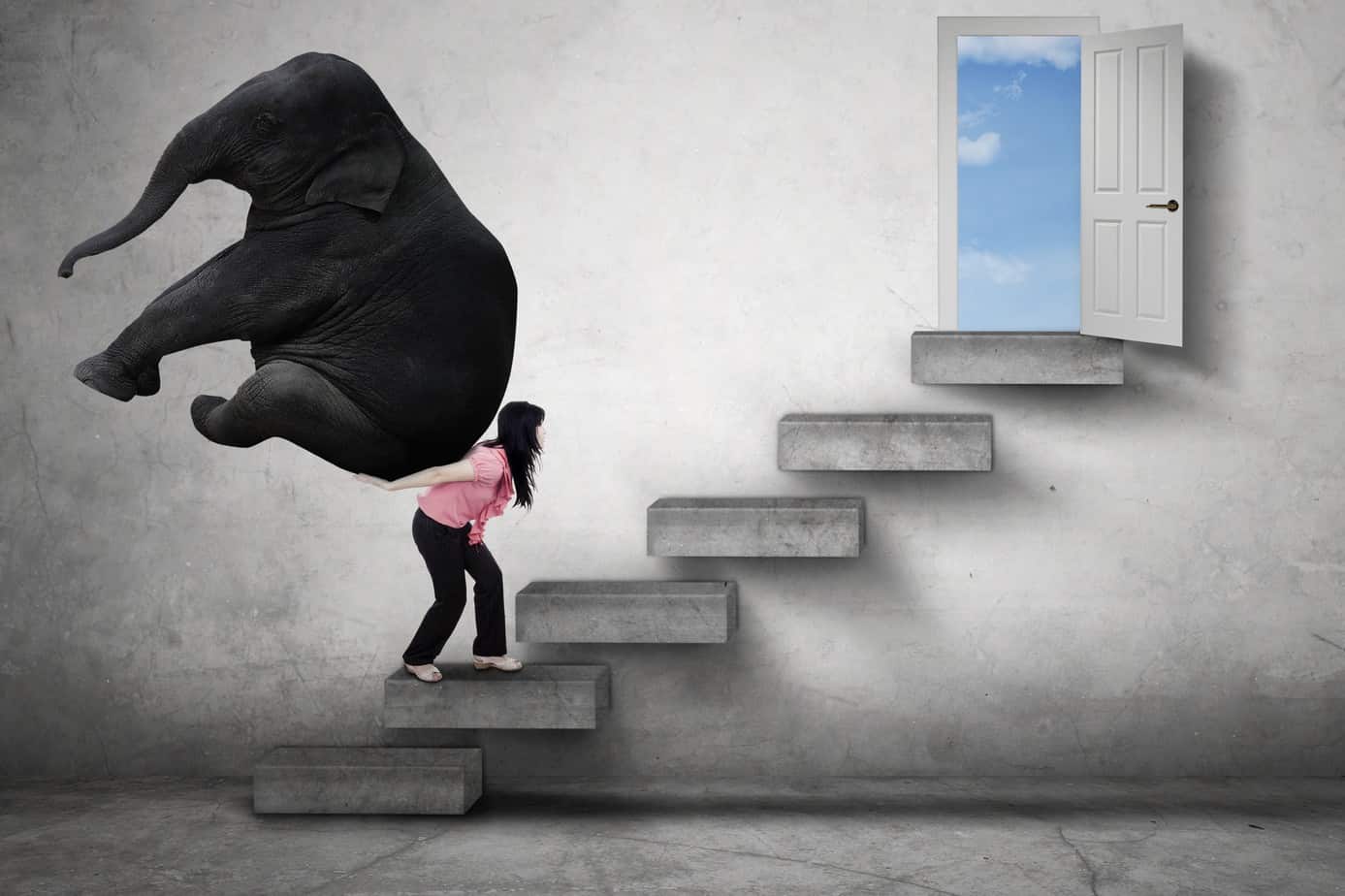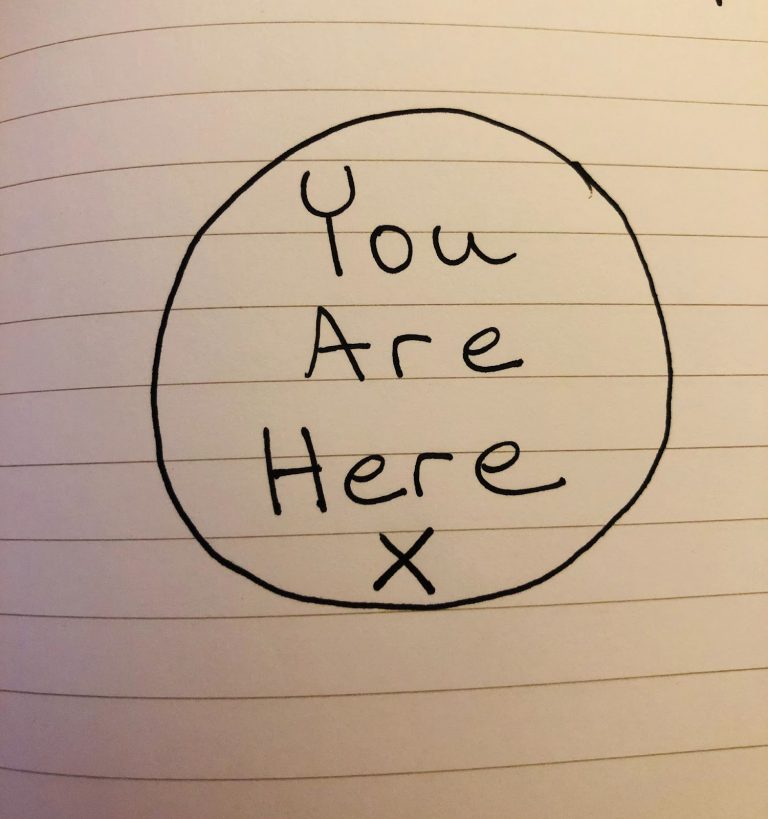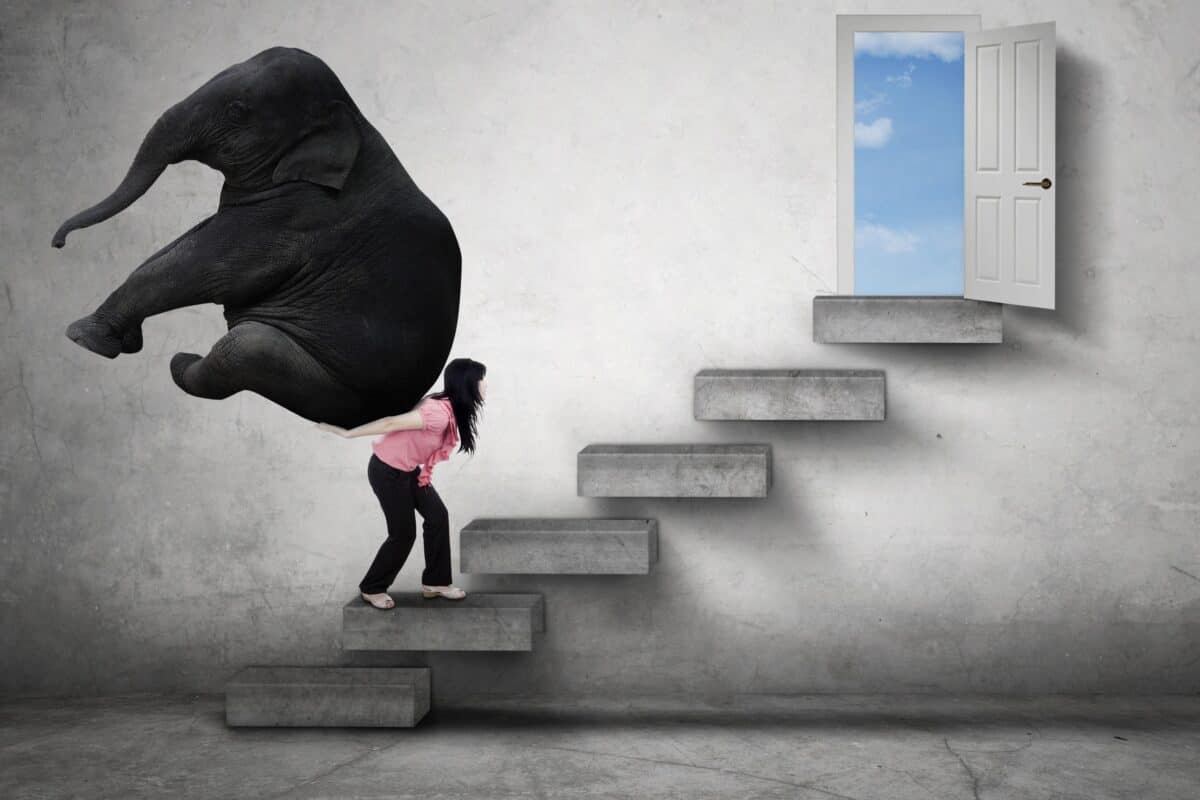
Crash, clatter, smash, tink, tink. A careless boy’s ball shatters the front window pane. A scorned lover flings a picture frame into the brick fireplace. A glass slipping through nervous fingers falls to the floor. All adrenaline rushes of fear, anger, and surprise. Moments of exhilaration turned sour if left to ferment.
When trauma goes unresolved, fragments of the soul get imprisoned. The glass is a broken mirror. The shards and cracks remind us of suffering. Painful memories lodge into our psyche. Eckhart Tolle named this tenant, the pain body. It’s that little voice in our heads creating dramatic stories to bolster our pride or to fear our imminent demise. Think Game of Thrones with its broken mirrors, stone floor, and great hall. So many reflections. Exhausting. It’s hard enough to be your pain body on the couch hiding under a bag of chips and a blanket. When we gather, it’s often pain slinging. The shards of our pain body become daggers.
An activated pain body feeds on and provokes the ensuing drama, and excels at naming the victims and perpetrators of its suffering. The unconscious part of this dreadful performance is what Carl Jung called the shadow self. Stephen Diamond says, “The shadow is a universal archetypal feature of the human psyche for which we bear full responsibility to cope with as creatively as possible.” The roller coaster of suffering that ensues when the shadow remains neglected, scorned and imprisoned, creates a sense of hopelessness. Sometimes it’s hard to catch a breath. Trying to keep our head above water, we hide our anxieties and humiliations beneath the surface. When it lurks, without our awareness, we become victims of oppression. This cycle is life-shattering. Rather than living, we get lulled to sleep by the pool of shadows, undermining our ability to fulfill our highest potential as individuals and as a society.
Coping with the shadow is not enough. Aletheia Luna says, “…to genuinely become a whole and healed person; you must integrate your shadow into your being… You must own your shadow, rather than avoiding or repressing it.” In nearly every spiritual tradition the pathway to awakening is through shadows seeding the light. Integrating the shadow reclaims our sovereign birthright as autonomous and liberated beings, and brings us together as collaborative and creative co-evolutionaries. On a societal scale, alleviating oppression is multifaceted. Community organizing, outreach education, taking political action, and transforming power structures are important and necessary steps. To do the outer work we need to include the inner work. One area often overlooked is the shadow self.
Embracing the Elephant
What does the elephant have to do with shadow work? The metaphor ‘elephant in the room’ is a thought-provoking symbol for all that we repress. The elephant, can’t hide behind the couch unless we are so deeply distracted by something, like the TV. Society diverts and conditions us to evade the most obvious problems and to accept the greatest challenges. These taboo topics thrive at the dinner table, in our work meetings, in line at the store, or on the bus. We refuse to greet these lurkers because we’re taught to remain silent about our deepest pains. We pretend that these shadow selves stay backstage, yet they stampede from under the curtain and slink across the catwalk, looming above. They may not always be understood, but they are almost always blatantly perceived. Part of the story is shame.

In recent news, we see the ugly face of fascism wielding its sharp tongue. We can help deconstruct this fascism, together, by also facing ourselves, rather than just attacking or transforming it externally. Next step to do this — bring the elephant to the front door. Shine light on its consciousness. Stay present. The front door symbolizes the persona that we present to the world. Our gift. Let us be present, as a fully integrated and authentic being, with honor and dignity, not shame. It is time for embracing and integrating shadows. In Hinduism, the elephant is the remover of obstacles. Balance light and dark by shifting the elephant to the front door. Elephant medicine helps us reclaim our power. Around the world, the elephant represents wisdom, discernment, strength, dignity, stability, tenacity, protection and peace. The elephant does not forget, yet it forgives. If we stop fighting against ourselves, we can finally stop fighting each other.
I once looked a wild elephant in the eye, as the sun rose up over the savannah, in Kenya. I strolled quietly in the dark, headed to meditate. It was my first encounter on foot. I did not see or hear him. I felt him. I stopped in reverence. I put myself between him and each passerby in the night, with whispers to walk respectfully. As rays of dawn touched my awareness, the bull elephant emerged twenty feet behind me. I felt honor, as I stepped out of the shadows and into the light. I’ve carried this moment with me in my spirit satchel for over twenty years.
In that time, I’ve accepted a lot of suffering. My deep respect for life kept me living. I began facing my shadows. It’s a work in progress. One thing the elephant knows is patience.
The Roots of Oppression
We need a lot of patience, will power and wisdom to deal with the complexities of oppression. Systemic oppression reduces people into powerless subordinates. Dianne Goodman defines oppression as a system of privilege, determined by one’s membership in society. Social conditioning normalizes oppression by enforcing ideas and values that perpetuate privilege. It becomes more insidious as it gets implemented at the individual (internalized beliefs) and institutionalized (policies and practices) levels. Andrew Langford writes, “Internalized oppression is very useful to (the system) once a community of people is infected they can unwittingly maintain the oppressive messages themselves… to continue the effect (and even) aspire to be admitted to the oppressor group.”
There’s a penetrating BBC series called ‘The Century of Self.’ In 2002 the British filmmaker Adam Curtis commentated, “This series is about how those in power have used Freud’s theories to try and control the dangerous crowd in an age of mass democracy.” The film positions social conditioning as an enforced method for training people to think and respond in manners approved by society. The bombardment of the media ensures success.
Curtis pitches Edward Bernays under the microscope. Freud’s nephew and the father of propaganda, Bernays used his uncle’s theories to produce strategies for market manipulation. The tactician knew that only the elite was smart enough to think for themselves. Everyone else needed direction, like cattle. His degrading concept was called herd theory, created to condition and manipulate our parents and grandparents into needing precise goods from ‘assured’ manufacturers. In his book, Propaganda, he wrote, “If we understand the mechanism and motives of the group mind, it is now possible to control and regiment the masses according to our will without them knowing it.”
Eduard Ezeanu sums up propaganda, “You are taking the information given to you and using it to live a half-life built on the dreams and desires of those who want you to use money you don’t have, to buy goods you don’t need, to impress people you don’t like.” Society is oppressed by and obsessed with superficiality. People care more about looking better than feeling better, seeking convenience and instant gratification, while paying little attention to consequences. Most American’s have become blind consumers and materialists. Just get a credit card.
With card in hand, users are free, free to participate in mass-consumption of resources to meet endless desires, with little control over the manufacturing. The decoupling of consumption and production leaves behind toxins. We can’t be certain of who poisons us. Impaired health increases our dependency on the system operating. Are we losing our minds? Diane Ackerman says, 4.5 million people have Alzheimer’s, “and that number is expected to increase to 16 million by 2050”. She says the disease is predictable. Brains with the least neurological cell connections forget the disease. In the Soul of Capitalism, William Greider agrees, “The American consumer has become such a hallowed intuition, it is easy to forget that the feat of mass consumption is rather a recent phenomenon in human history.” It is easy to forget when infinite neurological networks diminish to pen hookers, stock yards, and livestock. Don’t despair, each pen is fitted with cable(s)!
In less than fifty years, our imPENding demise is spreading like a global issue of great consequence. Deployed on the wings of Neo-liberal capitalism, Greider says, “The darkening shadow cast across the mass consumption economy has many threatening expressions. We are the 6th mass extinction.” Greider points the finger at an economic system where corporations decimate life in the name of profit and privatization, for political favoritism. I don’t know that pointing fingers is the most effective solution, as it automatically creates separation. So much of our energy focus is on fighting against something, which is important but can’t be the only solution. We must also look within and address the psychological components of oppression through shadow work. Rage and anger against the systems supporting our suffering are real and valid. The rest of this paper zooms in on how to harness that energy to do much needed inner work, that is too often not incorporated into the discussion on oppression. We need to add this layer now before we loose our minds.
Now is always the time to wake up. The 21st-century is setting on a tipping point. On one side we have the loss of natural resources, climate change, and an emergence of a neuro society. What’s on the other side? We may never know. All we can know is ourselves. Be aware. Knowingness is getting a facelift, by Neurotechnology TM. Old school deception, propaganda and socialization techniques are going to bed with brain science. In the book Neuro Revolution, Zach Lynch says, “Private venture capital investment in neurotechnology start-ups has skyrocketed 300 percent over the past decade… The development of sophisticated neuroweapons is going to create a perpetual state of tension between promise and peril.” We need to deconstruct oppression from within our minds and wake up. Now. Don’t forget.
The Light of Consciousness
Opression has a lot of shades. Virtually everyone in a society of privilege experiences racism, sexism, xenophobia, classism, ableism, ageism and fanatical intolerance either directly or indirectly through the collective unconciousness. It took root in our souls long before the 20th century. Millennia’s of religious indoctrination stigmatized natural desires and glorified prescribed ways of living. Religion was the teacher that instilled denying and repressing the shadow in ourselves. These holey beliefs ferment and stagnate as the hidden, guilt-laden, feared part of humanity. Shame… Shame… Shame… We judge others despite being isolated ourselves.
Who gets a daily beating by loved ones, family, neighbors, teachers, idols or the Gods, and the omnipresent TV, at least once a day? We all do. A chorus of you’re not good, cute, smart or skilled enough; you’re not holy or pure enough, is sung by a choir of sadistic and confused angels. We eventually sing the chorus to ourselves and in disdain or fear of our nemeses, as we drift off to sleep. Self-loathing and blame often hit the pillow. Most of us have experienced mild to severe post-traumatic stress from this heap of holy shit in our playpens. It’s time to grab the shovel. Remember, “big boys don’t cry.”
We need to unlearn this barely living crib to grave mentality. Repression follows a similar path as learning. As we level up, we practice until skill becomes unconscious. We can’t possibly keep the know-how of being a master carpenter, at the forefront of awareness, or we’d miss hitting the nail. This deferment of information to the unconscious depths of our minds becomes dangerous when the lessons don’t serve our highest selves. Adhering is part of being human, built into our survival instincts as a coping strategy. We fit in to survive. We stay amiable and domesticated in the eyes of others. The repressed bit emerges nonetheless out of our control, creating a collective psychosis. That’s my diagnosis.
Are you ready to dive into the darkest depths of the ocean to brave the shadow? It feels intimidating, naturally. It’s unknown. Some religions pollute the deep with the devil itself, dumping remorse, pain, suffering, and revulsion into the ocean of our consciousness. In reality, there are a lot of gems in the shadow, like treasures of gold and jewels in sunken ships. The terrain is awaiting our exploration. Teal Dawn says that shadow merely lacks the light of consciousness. The unaware parts are not harmful or evil. Dr. Jekel can finally stop hiding Mr. Hyde because when we integrate the shadow, it no longer overpowers us. Shadow seeds light. The elephant emerges. Wisdom wins.
My favorite song about integrating shadows:

Nature’s Remedy
Animals react to threats by engaging the autonomic nervous system (ANS), which acts mostly unconsciously and regulates bodily functions such as respiration and digestion. This system controls the fight, flight or freeze response. An animal facing a situation where fight or flight are not an option will freeze, allowing for organs to reserve energy and for pain receptors to become numb. Animals recover from traumatic experiences by shaking, trembling and deep breathing. Sometimes a baby gazelle, caught by a lion has a chance to escape if the lion leaves to bring its young back to the kill. The gazelle shivers and releases this frozen energy, before it runs away. Trembling completes the survival process.

Humans fight, flee or freeze when threatened, injured or overwhelmed. Fight or flight is activated to outrun, out-think, avoid or fight off our alleged attackers. The freeze response activates when we feel trapped. Unfortunately, due to our general overwhelmed state from pressures of society, we often overreact or default to freeze mode, whether the danger is real or perceived. True threats are rare. Most slips are us tripping over the roots of our beliefs, as they bend reality and unnecessarily activate the ANS. We also slip out of sheer exhaustion. Our ANS is overburdened. It’s clocking constant over time as we fight endless battles, flee from our enemies and stand frozen in the face of our demons. A rush of exhilaration can even startle the ANS. The vibration and vernation can get confused with fear. An exhausted ANS can’t easily discern thrill from threat or a treat from terror.
Levine says, “past emotional trauma shards will continue to impact and haunt the victim until the trauma releases from their system.” Emotion is energy in motion, designed to flow through the body. It seeds our experience. It gives us poetry and prose. Emotions rejoice when they are flowing. We haven’t been taught how to dance with feelings. Sometimes when emotions are coming, we fear all of them. It’s out of our control. When our ANS is on high alert, it shoots before asking questions. Then it feels guilty. Layers of this get buried in a quagmire of confusion and shame. Fight, flight and freeze become just oh’f*ck. It’s the freeze response specifically though that gets stuck. It’s almost like a piece of DNA gets frozen. Every time our little train of awareness goes over that track, it skips. Like a broken record.
Woah, that’s a lot. It makes me appreciate just how hard it is to be human when we can’t equalize after stress. According to Levine’s work, animals just do it and move on. Society has conditioned us not to be animals. Shaking, trembling, and discharging is not appropriate. We are ashamed of and frightened by our healing, so we brace against or repress the process, preventing release necessary to restore homeostasis. Levine illuminates that we must unstick this energy, he says, “Healing of trauma has to do with re-association or what shamans call ‘soul retrieval.’ It’s a biological process.”
Levels of Deconstruction and Reconditioning:
We can retrieve our soul from the shadows and put the pieces back together again. There are four levels of deconstruction (break down) and reconditioning (put together):
Level 1 — GEMS — Retrieval of our hidden talents — Example — A young man, finds out that he’s good at cooking, but he had no idea until he tried, as he is from a family where only the mother cooked meals.
Level 2 — INCONVENIENCES — Breaking from norms — Example — This same man may have been raised thinking that the way food looked was more important than how it tasted. He was engaging in a certain way because of beliefs, but then just as quickly switched to a new way. With persistence rather than resistance, we can identify unsupportive social conditioning alone and end its influence.
Level 3 — LIMITATIONS — Self-limiting beliefs — Example — Can’t do X because of Y. Again this same man can’t be his real self because of judgment. He can’t pursue his dreams because he will fail. Rising above social conditioning is a matter of retraining yourself to think and behave in new ways.
Level 4 — TRAUMA IMPRINTS — Physical, Mental and Emotional Injury — Example — Someone, taught that sex is unnatural or unholy, has anxiety around intimacy that leads to bouts of abstinence and promiscuity. Traumatic stress such as sexual assault, domestic violence, rape, and war top this level. Anything that causes a person fear for their life or the life of a loved one, whether real or perceived, leaves an imprint. When the observation of a trigger unleashes built up trauma, to the point of panic or flashbacks, decide on whether to create space to process this in the immediacy or later. Counseling is advisable.

Zones and Sectors of Influence

~ Zones of Influence

~ Sectors of Influence

Integration Process
Treat trauma and oppression with a similar technique, one of calming the ANS, integrating shadows and then stepping into your autonomous integrated self, while also engaging others. The steps included mimic nature’s processes for maintaining equilibrium. At each step,
~ Permaculture principles are incorporated to support the healing journey.

Anchor — creating a container, setting goals, aligning purpose.
Space — Safety is an essential first step for anchoring. Comfort and security provide a container for cultivating vulnerability, humility, and authenticity. It takes courage to walk on this path. Choose a quiet and private location to limit interruptions. Cleanliness and organization help create clarity and prevent distractions. Set up space and time so basic needs, such as food and water, are easily met.
Time — Select intervals of time to engage with this process. Having an intentional start and finish helps with integration. The transitions become anchors for new learnings or bells of mindfulness, so we don’t get lost.
Resources — Selecting and engaging with inspiring music, art, books, etc., can serve as reminders of strength and connection. Create an altar with flowers, rocks or images of teachers and mentors.
Nature and Community — Establish a connection with nature and people. Get regular doses of sun, moon, stars, wind, fire, water and earth. Find allies for healing. Choose friends, family or an organized support group.
Prepare the Body — Select tools to use as a catalyst for healing, such as Yoga, Thai Chi, dancing, Pranayama, massage, Breama, Reiki, Acupuncture, Co-Counseling, Animal Therapy or plant medicine. Slowly incorporate these into a weekly routine. It’s important to have a form of body movement and fitness incorporated before proceeding. Practice being present, grounding and centering. Visualize protection and being in a place of power. Develop supportive rituals to access this power.
Prepare the Mind — Consider your goals and turn these into affirmations. Journal what you may wish to achieve and how. Begin to practice clearing the mind. Skill up with studying and practicing non-attachment, gratitude, self-love, compassion, forgiveness, positive thinking, and non-violent communication. Incorporate celebration and laughter. Osho says, “There is no limit to consciousness — the more you become conscious, the more you realize how much more is possible ahead… Love is a byproduct of a rising consciousness.”
Right Livelihood — It’s important to stop feeding the shadow. Begin by being more consciously engaged in life. Limit your exposure to social conditioning sources, like mainstream media. Don Miguel Ruiz’s 4 Agreements are helpful: have integrity with your word, don’t take anything personally, don’t make assumptions, know you’re doing your best. Cultivate non-violence/non-comparing, honesty, generosity, moderation, and peacefulness.
~ Principle of Positivity — One of Bill Mollison’s original principles of Permaculture states, “The Problem is the Solution.” Everything works both ways. I anchor to positivity, finding my way out of the brambles, as I snag on stories of my suffering. Here are twenty-four reflections I hold in my heart when doing shadow work, so I don’t get lost in the dark.

Reflect — observe and interact
Accessing the observer mind is a step towards healing. Be open and curious. Claim innocence. Become the wandering child. Maintain a growth mindset. Release the judging mind. Widen perspective. Go slow. Pay attention.
Step 1 — Observe what you notice outside of yourself.
- Find your senses. What is seen, heard, etc.?
- Experiment with nature and people watching.
Step 2 — Encourage full awareness of bodily sensations.
- Stay present, observe the body, breath, and sensations.
- Allow time for emotions to arise.
Step 3 — Observe patterns.
- Pay attention to patterns in behaviors, thoughts, and feelings.
- Observe expansion and contraction. Stay with sensations as they change. Don’t emotionally attach, analyze or interpret the transitions. Sensations are indicators for choice, not determinant answers.
- Observe and note triggers that cause the ANS to activate.
Step 4 — Invite the shadow
- Keep focusing on sensations. Think, talk or write about an experience. Pay attention to the feeling when the shadow arises, and let the energy dissipate or discharge.
- Repeat steps 1–3.
- Journal observations.
~ Principle of Observe and Interact — By observing both internal and external patterns we can expand our thinking. We must know how nature works if we want to be able to work with it. Likewise, for our shadow self.
Contemplate — understand
After a period of observation, understanding arises from getting to know the shadow. Awareness is powerful magic. When you are aware, you can develop practices to center yourself at will.
Ask Questions — Start looking inward. Choose any topic and see what arises. What am I feeling? How does it feel? When specifically did it first arise? Is my life being threatened? If no, let go, breathe and go deeper. Forget about the details. Focus on the patterns. When did this feeling arise before? What imprint, belief or need do I have that keeps seeking attention? There is no positive or negative, just keep asking. There is no right or wrong question or reaction. By exploring ideas, behaviors, desires, and emotions, we can get better at pinpointing false beliefs, limitations and frozen imprints. Track the different zones and sectors of consciousness — Where do thoughts arise? Notice their frequency. Note time intervals and the actual vibration. Recognize the unique frequency of your center, growth mindset and pain body. I have found that as I deconstruct my beliefs through questions, I end up with the same answers. It’s like a Rubik’s cube.
Here are seven areas to contemplate:
Origins of pain — identify the specifics of the pain by asking questions about when it occurs and the patterns of how it happens.
Motivation — Everything has a reason. Unearth the need not being met beneath the motivation.
Judgement — We usually judge others before we are aware of judging ourselves. It’s a mirror. When we work with the shadow, we reclaim these projections and heal those aspects within ourselves instead.
Difference between intuition and fear — The intuitive voice is strong and unemotional. The fearful voice is vague, paranoid and emotionally-charged. Learn how to distinguish between the two. Accept that neither is right or wrong. When there’s uncertainty — choose love.
Critical thinking — Schedule time for critical thinking to unearth the utility and rationality of opinions, and to observe patterns in nature and society. Patterns at play are invisible if you’re always running the same program. Run thoughts through multiple programs to validate their worth.
Transitions and interventions — People with an active ANS startle easily at points of transition. Whether it’s an unexpected noise in the house or an unfamiliar thought, someone with a sensitive or alert nervous system will often experience a jolt of adrenaline. It’s important to notice and understand when these stumbles occur. They become pivot points for intervention. Imagine putting a soothing balm between all the ‘now’ moments. Welcome and thank thoughts as they are received and released.
Peaceful Center — There are three core frequencies: Peaceful center, learning/growth, and stress/pain. Become familiar with the vibration of each. Notice the edge, the transition between the three. Honor and celebrate center, expand consciously, and witness the moment of pain body activation. Do not proceed while in your pain body. To be realistic, that’s not always the case. If possible, jot down any thoughts related to the trigger, finish what you were doing, and then focus all available energy on returning to center. Do not try to work with the shadow while in the pain body, especially outside of your intentional space. Cultivate tools and processes for returning to center.

~ Principle of Pattern to Details — Patterns are a source of inspiration for Permaculture. Energy flows in patterns. Life is made up of energy. We can use design thinking to understand the different zones and sectors of our consciousness. It is also essential that we establish patterns in our healing, and not get stuck in solving the detailed stories of our pain bodies. Once we understand a pattern, we don’t need to investigate each new trauma. Releasing the stuck energy becomes easier as healthy patterns get put into place.
Assimilate — align, adjust, and adapt
Learn these new understandings by embodying them through practice, resulting in a realignment and adjustment of neurological connections. Every year since 1987 the Dali Lama hosts dialogues with neuroscientists. He says that in Buddhism, training the mind is commonplace. Science has gotten in the way of healing. Until recently the field of psychology viewed nerve paths in the brain as fixed and immutable, with no new neurons being born. Sharon Begley documents these new findings in the field of neuroplasticity, showing that the brain can rewire, activate, unfreeze and run new lines. It can quiet circuits and cut pathological connections. Our actions expand or contract different regions of the brain based on functions that we use frequently or rarely. We are what we think.
Having new beliefs and awareness is not enough for full integration. When shadows emerge, old patterns may become slippery slopes. Poor behaviors return the moment the pain body activates, following a destructive path of least resistance, caused by wear and tear. We can retrain new pathways for energy to flow. With discernment for when and where to intervene, and through a practice of establishing new behaviors, the process itself will become smoother and more productive. Improvements will come faster.
~ Principle of Energy Cycling — In nature, when energy cycles, living systems grow. Practice aligning your body and spaces, so energy flows. Being organized and efficient, and expanding awareness increases the flow of energy.
Efficient Energy Cycling — Assist and adapt, rather than impede natural cycles, to increase opportunities. Attachment causes blockages. Life is energy. Deepak Chopra says, “under an electron microscope, matter turns into a haze of vibrations.” Awareness of frequencies and vibrations of energy serves as guideposts.
- Healthy energy is flexible/flowing/dynamic — receive and release, offer suggestions without attachment — this is peaceful center
- Unhealthy energy is stuck/frozen/rigid — repressed, hoarded, manipulated or controlled — this is pain body
~ Principle of Redundancy — Multiple connections between components creates stability. Understand that everything serves multiple functions, supported by many elements and connections. Redundancy and cooperation improve our chances of success. When practicing, repeat the effort over and over, and use multiple links in different scenarios.
~ Principles of Valuing Diversity and Edges — Edges increase diversity. Diversity creates resilience. Embracing diversity can lead to stability. Understand other people’s perspectives. Look at alternative society to see the edges. Learn from as many peoples and situations as possible. Create resilience as you practice.
Nurture — Care and tend
Because an overactive ANS regulates the liberation of trapped trauma, the release may need to be gradual and taken slowly. Nurturing and strengthening the body and the ANS helps unstick energy and integrate new pathways.
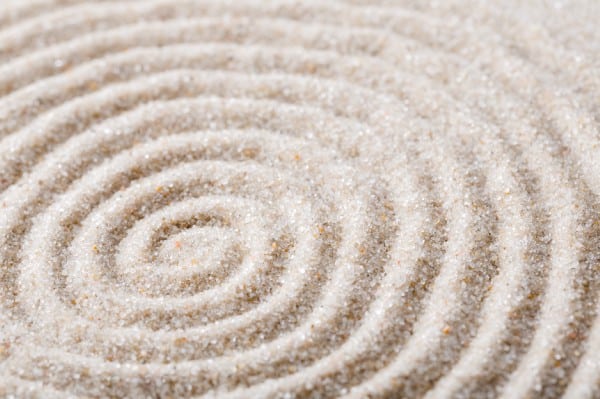
Discharge — Create new channels to allow energy to move. Practice pushing against things. Shake, tremble, tap, rock, cry, laugh, yell, or talk repetitively and nonsensically. Express feelings through art, writing, dancing, or theater. Learn to discharge immediately after pain body activation. Try to do so in a way that doesn’t create more pain. Get consent before discharging to others.
Exercise — Fitness activity supports the body in releasing patterns of stress, tension, and trauma, while also building resiliency, supporting brain function and the immune system. Exercise gives the body a chance to practice dealing with stress. It forces the body’s physiological systems, involved in the stress response, to communicate. While exercising, visualize escape. Practice actual running. Practice collapsing and recovering.
Energy and bodywork — Physical and energetic touch need to start slow to allow for stuck energy to be freed from the body. As trauma releases, it can manifest as trembling, shaking and accessing memory of the original emotional event.
Deep breathing — These techniques are vital to the treatment of trauma. Breathing is central to life and serves as a method for relaxation, concentration, moving energy and nurturing cells with oxygen. It’s a balm to the ANS.
Water — The element that covers 70% of the planet and similarly our bodies, is essential to our homeostasis. Water is a carrier of energy, and its structure is very reactive. No wonder it is a powerful agent of healing. The link between hydration and stress reduction is widely known. All of your organs perform better with water. Hydrotherapy can regulate body temperature, alleviate inflammation, and improve emotional health and well-being. Also, when the pain body is activated, drinking water can be an act of mindfulness to return to center. Often when the ANS is triggered, the body is agitated with too much heat and air. Water is the most soothing agent for an overactive ANS.
Meditation — Relaxation techniques including meditation and yoga exercises are essential elements of any healing process. These methods provide rest and restoration for the mind and body.
Life energy can also increase through good sleep and healthy eating patterns. Avoiding alcohol and pharmaceutical drugs are helpful when possible. Eating small, well-balanced meals with raw, fresh foods is recommended to help strengthen and detoxify the body.
~ Principle of Using Biological Resources — This design principle is concerned with the use of natural resources to do work or conserve energy. Using the above natural healing techniques will create better yields than using pharmaceutical medications that repress symptoms and shut down the body’s natural functions. Permaculture emphasizes self-reliance by meeting our needs with accessible and appropriate natural resources.
~ Principle of Small and Slow Solutions — This concept means starting small, celebrating successes and then slowly expanding. Don’t take on too much too quickly. The same idea you’d apply to a forest garden is relevant for tending the garden of the mind.

Evaluate — feedback and effort
Wayne Dyer wrote, “Conflict cannot survive without your participation.” You can stop participating in oppression. Don’t force the process. Allow it to take its natural course while you integrate the shadow. With evaluation, we can make sure that we are not getting imprisoned even in our healing process. Evaluation encourages us to step back and look at the effort and outcomes from multiple perspectives. We can accept feedback and use this to design how we move forward on the emerging path.
~ Principle of Self-Regulation and Accepting Feedback — Self-regulation involves a set of positive and negative feedback. The process merely accelerates or slows down momentum. In the human body, the brain and heart are great examples of auto-regulation. With the mind of the experimenter, we can collect feedback from our experiences without judging them as right or wrong. We can use these indicators and guideposts for maintaining homeostasis and healing.
~ Principle of Creatively Use and Respond to Change — Change is inevitable. It’s natural to resist change, especially when challenges seem beyond our control. How we react is under our control. Being agile in dealing with anticipated or unforeseen change is imperative to address oppression and for preventing the accumulation of future trauma imprints.
~ Principle of Obtain a Yield — Everything gardens and therefore yields are essentially unlimited. Evaluate if you are getting useful yields from your efforts. As Bill Mollison says: “The yield of a system is theoretically unlimited, or, limited only by the information and imagination of the designer.”
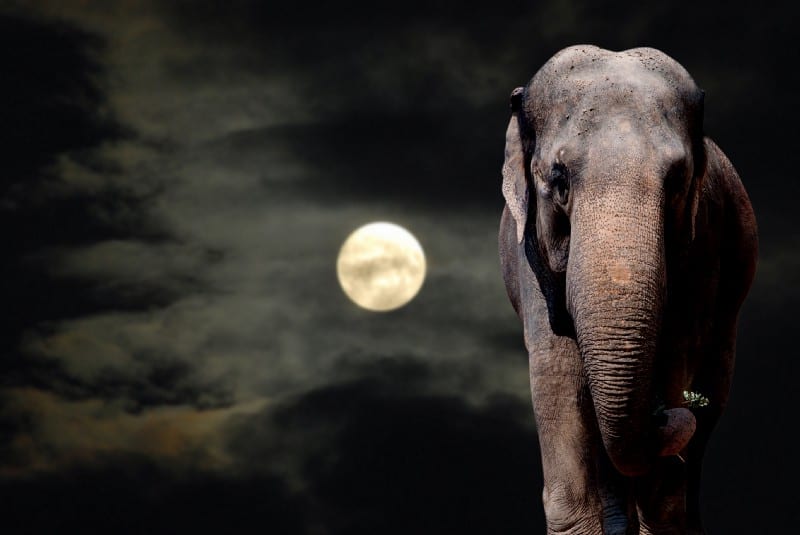
We are the Elephant
If at a very young age, an elephant is tied with a rope and trained that it is enough to hold them, they will remain conditioned to believe it will keep them restrained as they grow. How many of us go through life tied to a belief that we cannot do something, like the elephant, because we failed or got beat down once before?
Each of us must walk the path of embracing and integrating the shadow to reclaim our real power. To deconstruct oppression, we will need to understand and accept that life exists within an interconnected state of sovereignty. We are each autonomous yet deeply connected. We must break free of the oppressor and the oppressed; as there is only energy emerging as consciousness. We are the witness. We can all become the regal elephant, standing in our place of ascendancy, actualization, autonomy, accountability, independence, freedom, and liberation.
Let’s move through the cycle — from being lulled asleep — to feeling controlled — to the intense overwhelm of being awake — to stepping fully into power — to supporting our communities in moving through this process, and skilling up our response to oppression. It begins with taking full responsibility. Focus on the healing and integration of shadows. Rise above the roles of victim and perpetrator. Calm the ANS. Return to center. Help others. Keep at it. The cycle keeps repeating. The flow continues flowing.
Darkness seeds light. Find your freedOM. Loosen your grip. Stay calm. The feeling of the observer. Drift deeper. It goes on and on. In the spirit of our teachers, embrace the contradictions.
Bibliography
Ackerman, Diane (2004). An Alchemy of Mind. Scribner, New York.
Begley, Sharon (2007). Train Your Mind Change Your Brain, How a New Science Reveals Our Extraordinary Potential to Transform Ourselves. Ballantine Books, New York.
Chopra, Deepak (2004). The Book of Secrets: Unlocking the Hidden Dimensions of Your Life. Random House, Inc., New York.
Curtis, Adam (2002). The Century of Self. British Broadcasting Company. https://www.youtube.com/watch?v=eJ3RzGoQC4s
Diamond PhD., Stephen (2012). Essential Secrets of Psychotherapy: What is the shadow? Psychology Today. April 20.
Ezeanu, Edward (2013). How to Rise Above Social Conditioning and Live an Amazing Life.
Goodman, Diane J. (2015). Oppression and Privilege: Two Sides of the Same Coin. Journal of Intercultural Communication. No 18, pp. 1–14.
Greider, William (2003). The Soul of Capitalism — Opening Pathways to Moral Economy. Simon and Schuster Paperback, New York.
Langford, Andrew (2015). Thinking About Worldviews. Gaia University. http://gel.gaiauniversity.org/course/view.php?id=428
Levine, Peter A. (2008). A Pioneering Program for Restoring the Wisdom of Your Body. Sounds True, Inc., Boulder, CO.
Luna, Aletheia (2012). Shadow Work: How to Let Your Demons Guide You (Without Going Crazy). https://lonerwolf.com/shadow-work-demons/
Lynch, Zach (2009). The Neuro Revolution: How Brain Science is Changing the World, St Martin’s Press, New York.
Osho (2001). Love, Freedom, Aloneness: The Koan of Relationships. Osho International Foundation.
Ruiz, Don Miguel (2000). The Four Agreements. Amber Allen Publishing, California.
Swan, Teal (2014). Diving Deep (Shadow Work). https://www.youtube.com/watch?v=qHPI6LucOo0
Tolle, Eckhart (2006). A New Earth: Awakening to Your Life’s Purpose. A Plume Book, England
Yaima (2014). Gajumaru. Pellucidity. Jumpsuit Records.
Previously published in issue #106 of Permaculture Design Magazine and in the Gaia University Newsletter.

